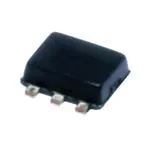Semiconductors are an essential part of modern technology, playing a crucial role in everything from computers and smartphones to medical devices and renewable energy systems. But how did these tiny components come to be such a significant part of our lives? To truly appreciate the impact of semiconductors, we must delve into their fascinating history.
The story of semiconductors begins in the early 20th century, with the pioneering work of scientists and engineers who were exploring the properties of materials and their ability to conduct electricity. One of the key figures in this journey was Julius Edgar Lilienfeld, who in 1925, received a patent for a device called a “Method and apparatus for controlling electric currents.” This device was the first-ever prototype of a field-effect transistor, which would later become a critical component in the development of semiconductor technology.
However, it wasn’t until the late 1940s that the true potential of semiconductors was realized. This was primarily due to the groundbreaking work of scientists William Shockley, John Bardeen, and Walter Brattain at Bell Laboratories. In 1947, they successfully created the first point-contact transistor, a device that could amplify and switch electronic signals. This achievement marked the beginning of the semiconductor era and led to the development of modern electronics.
The invention of the transistor revolutionized the technology industry. Before transistors, electronic devices relied on bulky and power-hungry vacuum tubes, limiting their portability and practicality. With the advent of transistors, electronics became smaller, more efficient, and more accessible to the general public. This led to the rapid growth of the consumer electronics market, fueling innovation and economic prosperity.
As the demand for smaller and faster electronic devices continued to grow, so did the need for more advanced semiconductor materials and manufacturing processes. This prompted further research and development in the field, leading to the invention of the integrated circuit (IC) in the late 1950s. The IC, also known as the microchip, allowed for the integration of multiple transistors and other electronic components onto a single semiconductor wafer, paving the way for the miniaturization of electronics.
The 1960s and 1970s saw a significant expansion in the use of semiconductors, as they became the backbone of the burgeoning computer industry. Companies like Intel and Texas Instruments played a crucial role in driving semiconductor innovation, introducing new materials and fabrication techniques to meet the growing demand for faster and more powerful computer chips.
The 1980s and 1990s brought further advancements in semiconductor technology, with the development of complementary metal-oxide-semiconductor (CMOS) technology and the rise of the internet age. The integration of CMOS technology into semiconductor manufacturing processes enabled the production of high-performance, low-power microchips, making them ideal for portable devices and wireless communication systems.
The turn of the 21st century marked a new era for semiconductors, with the emergence of nanotechnology and the development of new materials such as graphene and carbon nanotubes. These materials have the potential to revolutionize semiconductor technology once again, offering faster speeds, higher efficiencies, and new applications in areas such as healthcare, environmental monitoring, and renewable energy.
Today, semiconductors continue to drive innovation across a wide range of industries, from artificial intelligence and autonomous vehicles to clean energy and biotechnology. The relentless pursuit of smaller, faster, and more efficient semiconductor technology has transformed the way we live, work, and communicate, and the future holds even more exciting possibilities.
In conclusion, the history of semiconductors is a testament to human ingenuity and the relentless pursuit of progress. From the humble beginnings of the transistor to the cutting-edge advancements in nanotechnology, semiconductors have shaped the modern world in ways that were once unimaginable. As we look to the future, it’s clear that the impact of semiconductors will continue to grow, driving innovation and shaping the world for generations to come.
Post time: Mar-01-2024


